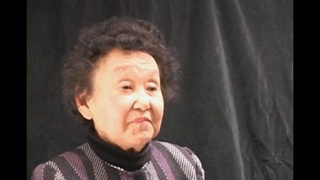Interviews
Fun at concentration camp
I was so young that all we did…they just let us play wherever we wanted to do. So that’s what we did. We just roamed all over camp and embarrassed my father. Because he was the fire watch for that block and we set the water tank on fire accidentally, playing with matches. But that’s all I remember -- it was a lot of fun.
I remember eating separately by age and by sex. So that to this day, I think my generation really has trouble eating together as a family. It’s just a habit from that time, you know. We never…my mother never cooked lamb because every Friday was lamb stew – mutton stew – at the cafeteria and it’s that…mutton is that really oily…you know, so she would never. So I didn’t discover lamb until college.
Date: December 3, 2004
Location: California, US
Interviewer: Art Hansen, Sojin Kim
Contributed by: Watase Media Arts Center, Japanese American National Museum










